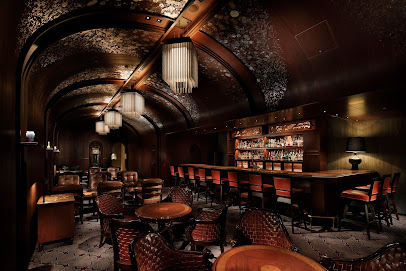
The Iconic Nihonbashi Bridge: Tokyo's Historic Landmark
Discover the historic Nihonbashi Bridge, a beautiful fusion of tradition and modernity in the heart of Tokyo, rich with culture and culinary delights.
Nihonbashi Bridge is a historic and architectural marvel situated in the heart of Tokyo. This bridge holds significant cultural importance, connecting the past with the present. Tourists visiting Nihonbashi can explore the surrounding area, rich in history and modern attractions, making it a must-see destination for anyone looking to experience the essence of Tokyo.
A brief summary to Nihonbashi Bridge
- Nihonbashimuromachi, 1 Chome, 8~日本橋1丁目1, Chuo City, 1 Chome Nihonbashimuromachi, Tokyo, JP
- Monday 12 am-12 am
- Tuesday 12 am-12 am
- Wednesday 12 am-12 am
- Thursday 12 am-12 am
- Friday 12 am-12 am
- Saturday 12 am-12 am
- Sunday 12 am-12 am
Local tips
- Visit during early morning or late afternoon for the best lighting for photographs.
- Explore the nearby streets for hidden gems, including local shops and traditional eateries.
- Take a leisurely walk along the Sumida River for stunning views of the bridge and skyline.
- Check out seasonal festivals and events held in the Nihonbashi area for a unique cultural experience.
Getting There
-
Car
If you're driving, start from central Hitachi and take Route 6 (National Route 6) heading south towards Mito. Continue on Route 6 for about 40 km until you reach the junction with the Joban Expressway. Merge onto the Joban Expressway towards Tokyo. After approximately 75 km, take the exit for Kiba Interchange and follow the signs towards Chuo City. Continue on local roads until you reach Nihonbashimuromachi, where Nihonbashi Bridge is located. Parking may be available nearby, but check for any fees.
-
Train
For those using public transportation, head to Hitachi Station and take the JR Joban Line towards Ueno. You'll need to transfer at Mito Station to the JR Narita Line towards Narita. Alight at Tokyo Station, which takes about 2 hours in total. From Tokyo Station, take the Tokyo Metro Marunouchi Line and get off at Mitsukoshimae Station. From there, it’s a short 5-minute walk to Nihonbashi Bridge, located at Nihonbashimuromachi 1 Chome. Ensure you check train schedules as they can vary.
-
Bus
Alternatively, you can take a highway bus from Hitachi to Tokyo. Buses leave from Hitachi Bus Terminal and take about 2.5 to 3 hours to reach Tokyo Station. Once you arrive at Tokyo Station, you can follow the same directions as the train option: take the Tokyo Metro Marunouchi Line to Mitsukoshimae Station and walk approximately 5 minutes to Nihonbashi Bridge. Do check bus schedules and book your tickets in advance if possible.
Discover more about Nihonbashi Bridge
Iconic landmarks you can’t miss
Nihonbashi
0.3 km
Explore Nihonbashi, Tokyo's historic and modern blend of commerce, culture, and culinary delights, where tradition meets innovation.

Tokyo Station
0.7 km
Explore Tokyo Station, an architectural gem and the gateway to Japan's vibrant transport network, blending history with modern convenience.
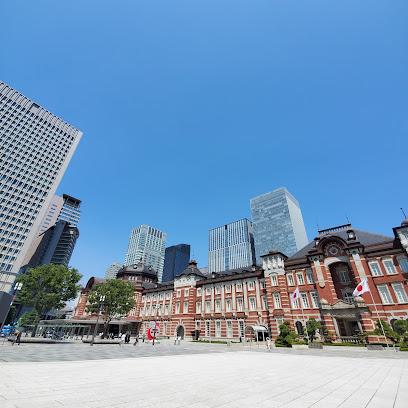
Katsuragawa Hoshuyashiki Ruins/Monument
1.0 km
Explore the Katsuragawa Hoshuyashiki Ruins, a hidden gem in Tokyo that reveals the city's rich historical tapestry and cultural heritage.

Remains of Tokyo Prefectural Office
1.1 km
Discover the historic Remains of Tokyo Prefectural Office, a unique blend of architectural beauty and rich history in the heart of Tokyo.

Mitsubishi Ichigokan Museum
1.2 km
Discover the stunning fusion of contemporary art and historical architecture at Mitsubishi Ichigokan Museum in Tokyo.

Tokyo International Forum
1.3 km
Discover the architectural brilliance and cultural vibrancy of Tokyo International Forum, a must-visit landmark in the heart of Tokyo.
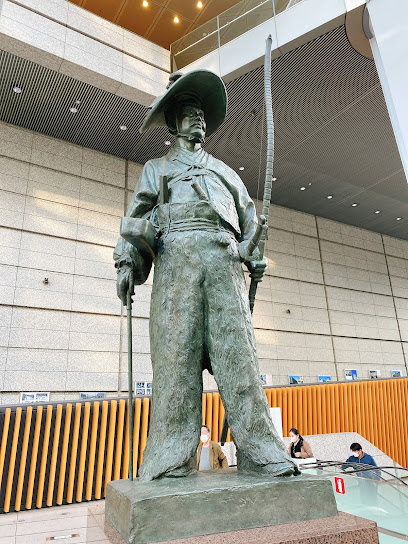
Ōte-mon Gate
1.3 km
Explore Ōte-mon Gate, a historical landmark in Tokyo that unveils the beauty of Japan's imperial past amidst serene gardens.

Origin of Ginza Monument
1.4 km
Explore the Origin of Ginza Monument, a historical landmark in Tokyo that showcases the rich cultural heritage of the Ginza district.

Eitai Bridge
1.5 km
Discover the beauty of Eitai Bridge, a stunning architectural gem in Tokyo, offering breathtaking views and a taste of the city's vibrant culture.

Manseibashi Bridge
1.5 km
Experience the charm of Tokyo at Manseibashi Bridge, where history and modernity converge in Chiyoda City.

Akihabara Park
1.5 km
Discover the serene beauty of Akihabara Park, a green haven in Tokyo's vibrant Akihabara district, perfect for relaxation and cultural experiences.

Ginza Central Street
1.5 km
Experience luxury shopping, exquisite dining, and vibrant culture at Ginza Central Street, Tokyo's premier destination for discerning travelers.

Akihabara Radio Kaikan
1.6 km
Explore Akihabara Radio Kaikan, Tokyo's ultimate shopping destination for anime, electronics, and pop culture treasures.

The East Gardens of the Imperial Palace
1.6 km
Experience the tranquility and historical richness of The East Gardens of the Imperial Palace, a serene retreat in the heart of Tokyo's bustling landscape.

Imperial Palace East Gardens
1.6 km
Explore the serene beauty and rich history of the Imperial Palace East Gardens, Tokyo's tranquil escape in the heart of the city.

Unmissable attractions to see
Statues of Kirin
0.0 km
Explore the enchanting Statues of Kirin in Chuo City, Tokyo—a stunning blend of history and artistry in the heart of Japan.

Nihombashi Pier
0.0 km
Explore the charm of Nihombashi Pier, a vibrant ferry terminal in Tokyo that offers scenic views and a unique gateway to the city's waterways.

Nihonbashi cruise ®️ (Tokyo Bay Cruise)
0.0 km
Explore Tokyo Bay's breathtaking views and rich history aboard the Nihonbashi Cruise, a unique perspective of the city's vibrant landscape.

Zero Milestone In Japan
0.0 km
Explore the Zero Milestone in Tokyo, a historical landmark marking Japan's distance measurements, where history meets modernity in the heart of the city.

ABC Cooking Studio (Coredo Nihombashi Studio)
0.2 km
Explore the flavors of Japan with hands-on cooking classes at ABC Cooking Studio in Nihonbashi, Tokyo, perfect for culinary enthusiasts of all levels.

Edobashi Bridge
0.2 km
Discover the historic Edobashi Bridge in Tokyo, a stunning architectural marvel connecting you to the city's vibrant culture and picturesque views.

Mitsui Honkan
0.3 km
Explore Mitsui Honkan, a historical landmark in Tokyo that beautifully merges tradition and modernity, showcasing Japan's rich cultural heritage.

Bank of Japan Currency Museum
0.3 km
Explore the history of currency at the Bank of Japan Currency Museum, where tradition meets innovation in the heart of Tokyo.

Mitsui Memorial Museum
0.3 km
Explore the exquisite art collections at the Mitsui Memorial Museum, Tokyo's hidden treasure for cultural enthusiasts and art lovers.
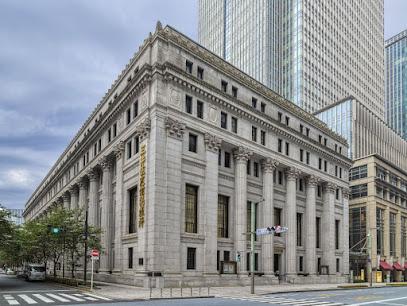
Fukutoku Shrine
0.4 km
Discover tranquility and cultural depth at Fukutoku Shrine, a serene Shinto shrine in Tokyo's bustling Chuo City, perfect for spiritual seekers and culture enthusiasts.
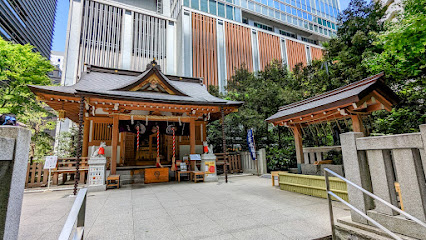
CRAFTROCK Brewpub & Live
0.4 km
Discover the heart of Tokyo's craft beer scene at CRAFTROCK Brewpub & Live, where fresh brews meet live entertainment in a vibrant atmosphere.
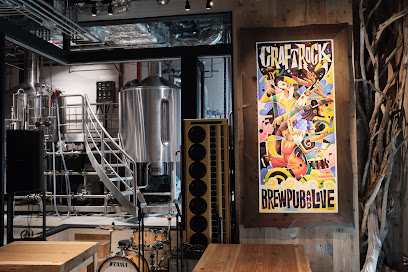
Hie-jinja Shrine Nihonbashi Sessha
0.5 km
Explore the serene beauty of Hie-jinja Shrine Nihonbashi Sessha, a tranquil Shinto shrine nestled in the heart of Tokyo, perfect for spiritual renewal and cultural exploration.

Ozu Washi
0.6 km
Explore Ozu Washi, Tokyo's premier destination for exquisite handmade washi paper and unique Japanese stationery, showcasing a rich heritage of craftsmanship.

Ryukan-sakura Bridge
0.7 km
Experience the breathtaking beauty of the Ryukan-sakura Bridge, a stunning architectural marvel and a must-visit tourist attraction in Tokyo, Japan.

Tokyo Ramen Street
0.7 km
Experience the authentic tastes of Japan at Tokyo Ramen Street, a vibrant food court beneath Tokyo Station, home to diverse ramen shops.

Essential places to dine
Taimeiken
0.1 km
Experience the unique fusion of Japanese and Western flavors at Taimeiken in Tokyo—home of the legendary omelette rice.
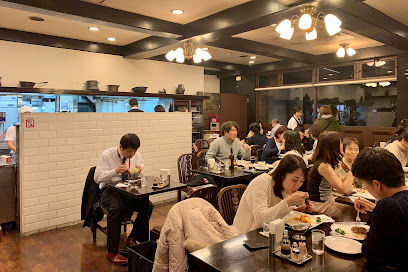
Ventaglio
0.3 km
Discover culinary excellence at Ventaglio, where Asian fusion meets Italian flair in the heart of Tokyo's Nihonbashi district.
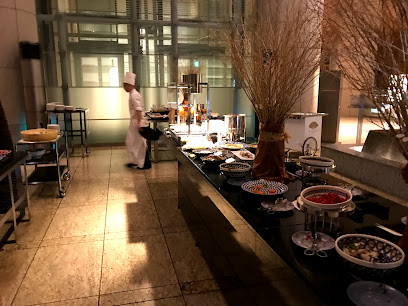
K'shiki
0.3 km
Experience authentic Italian cuisine at K'shiki in Tokyo—where every meal is crafted with passion and precision.

Signature
0.4 km
Experience exquisite French cuisine at Signature in Tokyo's Nihonbashi district, where every dish tells a story.

TATA
0.4 km
Experience the best of Japanese tapas at TATA in Tokyo's Chiyoda City - where flavor meets tradition in every dish.

Tapas Molecular Bar
0.4 km
Indulge in innovative Japanese tapas at Tapas Molecular Bar in Tokyo – where traditional flavors meet modern culinary artistry.

Nadaman at Shangri-La Hotel Tokyo
0.5 km
Experience the finest authentic Japanese cuisine at Nadaman in Shangri-La Hotel Tokyo - where tradition meets luxury.

Yonezawa Gyu Oki
0.6 km
Discover the exquisite taste of Yonezawa beef at Yonezawa Gyu Oki—where tradition meets culinary excellence in Tokyo.

Japanese Restaurant
0.7 km
Experience authentic Japanese izakaya culture in Chuo City, Tokyo with exquisite dishes and a warm atmosphere.

Ninja Tokyo
0.7 km
Discover the fusion of tradition and innovation at Ninja Tokyo—where every dish tells a story in an enchanting setting.

Sushi Hōseki - Kenji Gyoten
0.7 km
Discover the art of sushi at Sushi Hōseki - Kenji Gyoten in Tokyo, where tradition meets luxury for an unforgettable dining experience.

Musashi by Aman
0.8 km
Experience the art of sushi at Musashi by Aman – where tradition meets luxury in Tokyo's skyline.

The Cafe By Aman
0.8 km
Discover unparalleled elegance and exquisite flavors at The Cafe By Aman in Tokyo's Otemachi Tower.

Edomae Shinsaku
0.9 km
Discover the authentic flavors of Edomae-style tempura at Edomae Shinsaku in Tokyo's vibrant Chuo City.

Sushi Tempura Aki
0.9 km
Discover the exquisite flavors of Japan at Sushi Tempura Aki - where fresh sushi meets crispy tempura in a delightful dining experience.

Markets, malls and hidden boutiques
Nihombashi Takashimaya S.C.
0.4 km
Discover the epitome of luxury shopping at Nihombashi Takashimaya S.C., where modern elegance meets traditional Japanese charm in the heart of Tokyo.

Eslite Spectrum Nihonbashi
0.5 km
Discover the charm of Eslite Spectrum Nihonbashi, Tokyo's cultural hub blending literature, shopping, and art in a stunning setting.

Another Japan
0.5 km
Experience the delightful fusion of Japanese sweets and souvenirs at Another Japan, a unique variety store in the heart of Tokyo.
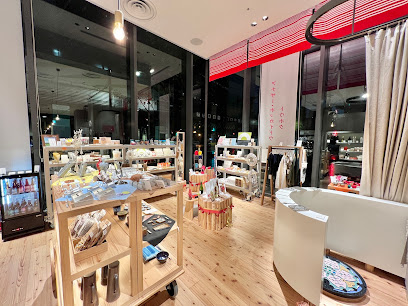
K-spot
0.6 km
Discover unique Japanese souvenirs at K-spot in Tokyo's Marunouchi, a perfect blend of tradition and modernity for every traveler.

Tokyo Character Street
0.6 km
Explore Tokyo Character Street - A vibrant shopping mall celebrating the essence of Japanese pop culture with unique character-themed stores.

First Avenue Tokyo Station
0.6 km
Experience the heart of Tokyo at First Avenue Tokyo Station, a shopping and dining paradise beneath the iconic station.

HANDS Tokyo Store
0.6 km
Explore HANDS Tokyo Store, a vibrant gift shop featuring unique souvenirs, DIY supplies, and a variety of home and stationery products in the heart of Tokyo.

Gift Kiosk
0.7 km
Explore the vibrant Gift Kiosk in Tokyo for unique souvenirs that celebrate Japanese culture and make your travel memories unforgettable.

OLD-FASHIONED STORE TOKYO
0.7 km
Experience a delightful blend of nostalgia and modernity at Old-Fashioned Store Tokyo, where unique fashion accessories and novelty items await.

Nippon Department Tokyo
0.9 km
Discover the essence of Japan at Nippon Department Tokyo, your one-stop shop for unique souvenirs, local delicacies, and cultural treasures.

HATO MARCHE Gift Shop
0.9 km
Explore HATO MARCHE Gift Shop in Tokyo for unique souvenirs and gifts that embody the spirit of Japan, perfect for every traveler.

THE SHOP TOKYO
1.0 km
Explore the whimsical world of THE SHOP TOKYO, where unique gifts and delightful surprises await in the heart of Marunouchi.

Good Design Store TOKYO by NOHARA
1.0 km
Explore Good Design Store TOKYO by NOHARA for unique gifts and home goods that reflect Japan's rich design culture.

PLAZA Tokyo Store
1.2 km
Experience the vibrant shopping culture at PLAZA Tokyo Store, where unique finds and local flavors await you.

Caran d'Ache Boutique Ginza
1.3 km
Discover exquisite stationery and painting supplies at Caran d'Ache Boutique Ginza, Tokyo's premier destination for art lovers.

Essential bars & hidden hideouts
Mandarin Bar
0.4 km
Experience elegance and stunning views at the Mandarin Bar, Tokyo's premier destination for exquisite cocktails and fine dining.

Bar Ocean
0.4 km
Discover the vibrant nightlife of Tokyo at Bar Ocean, where creative cocktails meet a lively atmosphere in the heart of the city.

Kamiawa Bar
0.4 km
Discover the cozy charm of Kamiawa Bar in Tokyo's Yaesu district—where local flavors and warm hospitality await you.

COCKTAIL WORKS Tokyo
0.5 km
Experience the dynamic nightlife of Tokyo at Cocktail Works, where expertly crafted cocktails meet a stylish ambiance in the heart of Nihonbashi.

Hitachino Brewing Lab Tokyo
0.7 km
Discover the art of craft brewing at Hitachino Brewing Lab Tokyo, where tradition meets innovation in every sip.

Hitachino Brewing Marunouchi
0.7 km
Experience the essence of Japanese craft brewing at Hitachino Brewing Marunouchi, a vibrant brewpub in the heart of Tokyo offering unique beers and delicious cuisine.

BAR Oak
0.9 km
Discover the elegance of BAR Oak, a luxurious bar within Tokyo Station Hotel, offering exquisite cocktails and a serene ambiance in the heart of Tokyo.

RIGOLETTO WINE AND BAR
0.9 km
Experience the best of Italian and Spanish cuisine at Rigoletto Wine and Bar, featuring an exquisite wine selection in Tokyo's Marunouchi district.

VIRTÙ
1.1 km
Experience a unique blend of French and Japanese cuisine at VIRTÙ, Tokyo's premier bar and restaurant in Otemachi.

Speakeasy Bar羽月II
1.2 km
Experience the sophisticated charm of Speakeasy Bar羽月II, a hidden cocktail gem in Tokyo's Kanda district, blending tradition with modern flair.

Star Bar Ginza
1.2 km
Discover the refined cocktail experience at Star Bar Ginza, where expert mixologists create exceptional drinks in a chic setting.

BAR PENGUIN
1.3 km
Experience the vibrant nightlife of Tokyo at Bar Penguin, a cozy bar in Ginza with exquisite cocktails and a welcoming atmosphere.

Bar Takasaka
1.3 km
Experience the vibrant nightlife of Tokyo at Bar Takasaka, where expertly crafted cocktails and an inviting atmosphere await.

LEAP BAR
1.4 km
Discover the exquisite cocktail culture at LEAP BAR in Tokyo, where innovation meets tradition in an unforgettable nightlife experience.

MAIN BAR
1.4 km
Discover sophistication and exquisite cocktails at MAIN BAR, an upscale bar experience in the heart of Tokyo's Marunouchi district.
